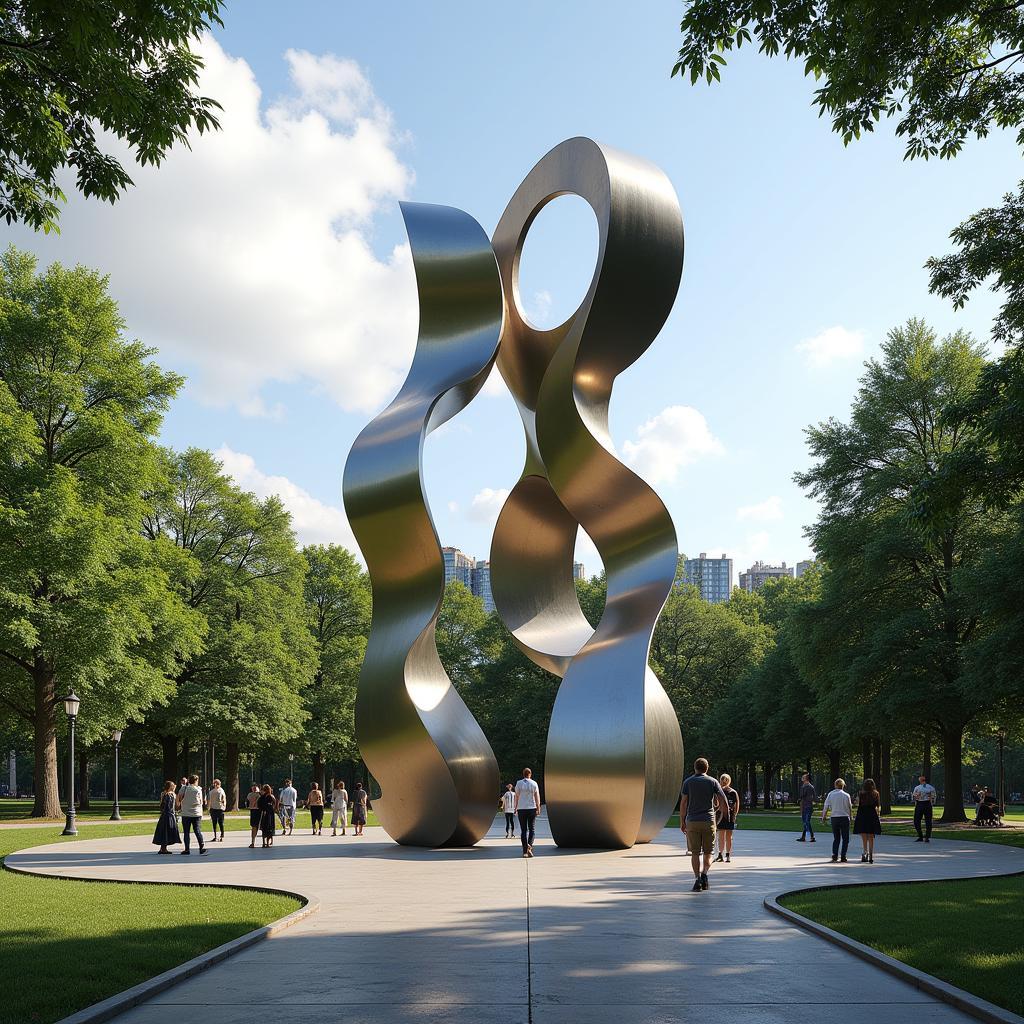Exploring the Bold World of Metal Sculpture Art
Metal Sculpture Art has captivated audiences for centuries, transforming raw materials into powerful expressions of creativity and artistry. From intricate figurines to monumental public installations, the versatility of metal allows artists to explore a vast range of forms, textures, and concepts. This exploration delves into the fascinating world of metal sculpture, examining its history, techniques, prominent artists, and enduring appeal. Check out our amazing collection of metal art sculptures.
A Journey Through Time: The History of Metal Sculpture Art
Metalworking has been integral to human civilization for millennia, with early examples of metal sculpture often serving religious or ceremonial purposes. Ancient civilizations like the Egyptians, Greeks, and Romans skillfully crafted bronze and other metals into statues, ornaments, and weaponry. The Middle Ages witnessed the flourishing of metalwork in religious art, with intricate altarpieces and reliquaries showcasing the dedication and craftsmanship of the era. The Renaissance marked a renewed interest in classical forms, leading to a resurgence of bronze casting and the creation of iconic sculptures like Donatello’s David.
The Industrial Revolution brought about new technologies and materials, expanding the possibilities for metal sculpture art. Steel, iron, and aluminum became readily available, inspiring artists to experiment with new techniques and larger-scale works. The 20th century saw the rise of modernism and abstract sculpture, with artists like Alexander Calder and David Smith pushing the boundaries of form and expression.
Shaping Metal: Techniques in Metal Sculpture Art
Creating metal sculpture art involves a diverse range of techniques, each offering unique advantages and challenges. Welding, forging, casting, and fabrication are among the most common methods employed by artists. Welding involves joining pieces of metal using heat, while forging shapes metal through hammering and other manual processes. Casting involves pouring molten metal into a mold to create a desired form. Fabrication involves assembling pre-made metal components into a larger structure.
Each technique requires specialized skills and tools, and the choice of method often depends on the artist’s vision and the specific properties of the metal being used. Some artists prefer the directness and immediacy of forging, while others are drawn to the precision and control offered by casting.
Mastering the Medium: Prominent Metal Sculpture Artists
Throughout history, numerous artists have made significant contributions to the world of metal sculpture art. Auguste Rodin, known for his expressive bronze figures, captured the human form with remarkable sensitivity. Constantin Brancusi’s abstract works explored the essence of form and material, reducing objects to their fundamental geometric shapes. Alexander Calder’s mobiles revolutionized sculpture with their dynamic movement and playful interaction with space.
Contemporary metal sculpture artists continue to push the boundaries of the medium, incorporating new technologies and exploring innovative approaches to form and expression. Artists like Anish Kapoor and Richard Serra create monumental works that engage with the surrounding environment, while others explore intricate details and delicate forms.
The Enduring Allure of Metal Art
Metal sculpture art continues to resonate with audiences due to its inherent qualities of strength, durability, and versatility. Metal can be shaped into an endless array of forms, from delicate filigree to massive, imposing structures. Its reflective surface interacts with light and shadow, creating dynamic visual effects. The inherent strength of metal allows for large-scale works that can withstand the elements and endure for generations.
Why Choose Metal Sculpture Art?
Metal sculpture art offers a unique blend of aesthetic appeal and practical considerations. Its durability makes it suitable for both indoor and outdoor display. Metal sculptures can add a touch of elegance and sophistication to any space, whether it’s a private home, a corporate office, or a public park. They can serve as focal points, conversation starters, or simply objects of contemplation.
You can also look at metal sculpture art wall to decorate your home.
FAQs about Metal Sculpture Art
What are the most common metals used in sculpture?
Bronze, steel, stainless steel, aluminum, and iron are among the most popular choices due to their varying properties and workability.
How is metal sculpture maintained?
Depending on the metal and finish, regular cleaning and occasional protective coatings may be necessary to prevent corrosion and maintain its appearance.
What is the price range for metal sculptures?
Prices vary widely depending on the size, complexity, and artist’s reputation, ranging from a few hundred dollars for smaller pieces to millions for large-scale installations.
In conclusion, metal sculpture art offers a powerful and enduring form of artistic expression, transforming raw materials into captivating works of art. From ancient civilizations to contemporary artists, the allure of metal continues to inspire creativity and innovation. Its versatility, durability, and aesthetic appeal make it a timeless medium for artistic exploration. Consider adding a piece of metal wall art horse to your collection.
 Abstract Metal Sculpture in Outdoor Installation
Abstract Metal Sculpture in Outdoor Installation
Looking for a specific kind of metal art? Check out yardbirds metal art or metal art horse.
When you need support, please contact Phone Number: 02462573573, Email: danteum@gmail.com Or visit us at: Savico Megamall, 7-9 Đ. Nguyễn Văn Linh, Gia Thụy, Long Biên, Hà Nội 10000, Việt Nam. We have a 24/7 customer service team.

